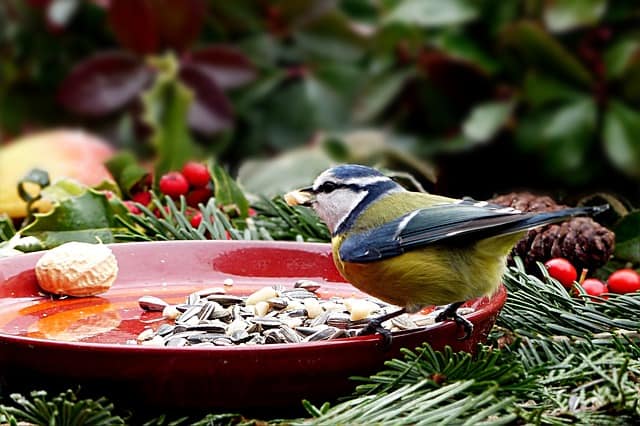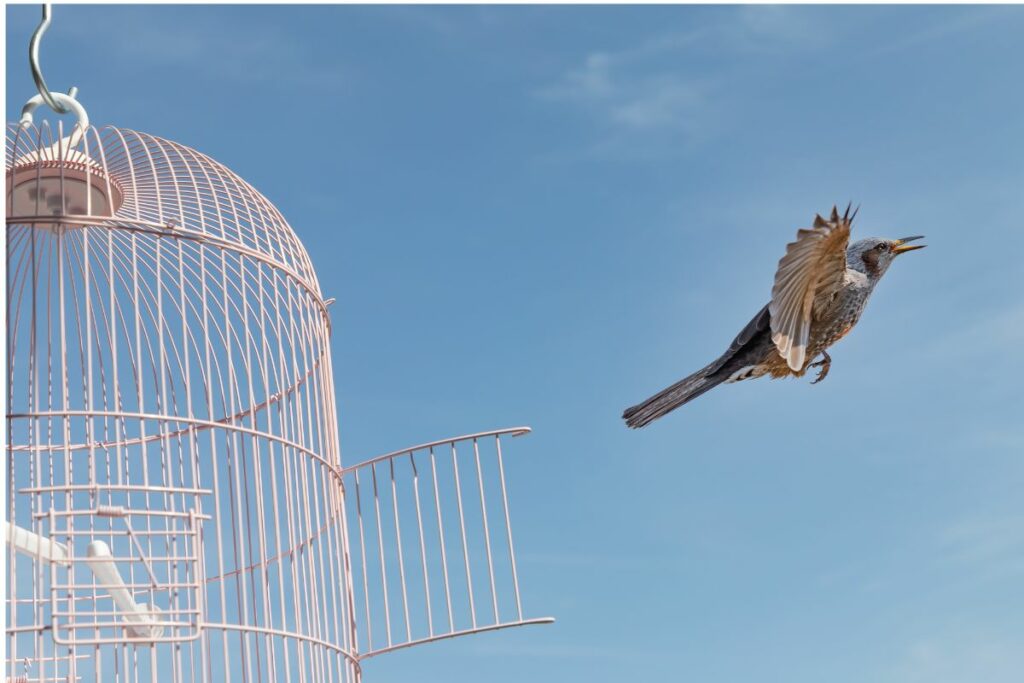As an Amazon Associate, we earn from qualifying purchases with no additional costs for you.
Several birds have become domesticated over the years. We have domestic geese, domestic ducks, and various parrots that are bred in captivity. The question is if any domestic bird could survive in the wild if set free.
Most of the time, domestic birds cannot survive in the wild because they have not learned how to find food or a mate. There are a few cases of domestic birds becoming invasive, but these are highly adaptable species that can survive in a variety of habitats.
Have domestic birds got what it takes to survive beyond the coziness of our homes? Read on to learn more about why domestic birds generally do not survive if released into the wild as we uncover the secrets of their adaptability and the challenges they might face in the great outdoors.
TIP: If you want to check out the best pair of binoculars for bird watching, we recommend a pair of waterproof and fog-proof 8 x 42 binoculars like the Celestron – Outland X 8×42 Binoculars (Amazon link).
Can Domestic Birds Survive In The Wild?
Birds not reared in the wild may not have the skills to know how to find food and survive in the wild. Domestic birds are used to being provided with food and they usually have a safe, predator-free environment to live in. This means there is a good chance the birds will not survive without someone helping them.
However, there are situations where some domestic birds have survived and even thrived in the wild. These birds are usually escaped domestic birds. It depends on the types of conditions the birds would live in naturally and how adaptable they are.
TIP: Knowing how to spot the birds in your yard is key to enjoying visits from your winged friends as much as possible! The best sources are trusted books, I recommend using the following (Amazon links):
– National Geographic Field Guide to the Birds of North America
– National Audubon Society Birds of North America
Invasive Domestic Bird Species
In South Africa, the Rose-ringed Parakeet (Psittacula krameria) has been established in the wild since the 1970s. Parakeets are thought to be the most invasive of all the parrots. These birds cause damage to crops, are very noisy, and displace other hole-nesting birds.
Although attractive and popular as pet birds, these parakeets can become a big problem when released. This is a case where a domestic bird has done well in the wild and even reproduces.
They have spread throughout much of South Africa, and you now need a permit to own the species as a pet. The Rose-ringed Parakeet is also invasive in Hawaii, where they cause considerable damage, feeding on crops in large flocks.
Watch this video on how the Rose-ringed Parakeets are causing environmental damage on Kauai:
Why Some Domestic Birds Can Survive In The Wild
Every species of bird has physiological tolerances, which means they can only survive under certain temperature and rainfall conditions. Some species cannot survive if it is too cold or too hot.
The climate of South Africa is not so bad that Rose-ringed Parakeets couldn’t survive outside. These birds live in a variety of habitats and easily adapt to living in cities and suburbs.
TIP: Choosing the right bird feeder is crucial when you want to attract birds on your backyard. There are a lot of options on how and where to place a bird feeder. Check out my picks on different bird feeders below (Amazon links):
– Free-standing Bird Feeder
– Hanging Bird Feeder
– Bird Feeder with Camera
Reasons Why Most Domestic Birds Don’t Survive In The Wild

Domestic birds are reared in captivity. This means that they have not learned the important skills a bird needs to have to live out in the wild. Baby birds reared out in the wild are taught how to survive by their parents.
1. Domestic Birds are Accustomed to People
It may not initially seem that a bird being familiar with people is bad. However, people pose a threat to wildlife. Some people even view birds as pests to be eradicated or as food.
A domestic bird that trusts people should not be released into the wild because it could land on someone who is not a bird lover or views the bird as food.
2. Temperature And Precipitation Affecting Domestic Birds
Each bird species has physiological limits. In other words, their bodies can only function within a range of temperatures and precipitation. This is why different species of birds are found in Canada to Brazil.
Domestic species often come from the tropics or countries like Australia. They are uniquely adapted to where their wild relatives still live. This means a domestic Cockatoo released into the wild in Canada would not survive the bitterly cold temperatures.
It also explains why birds that become invasive often do so in areas that match the conditions in which they can survive.
3. Food And Water for Domestic Bird Species
Baby birds learn how to forage for food from their parents. This includes knowing and learning what foods they can eat and how to find or catch their food.
For insectivorous species, this means knowing how to look for insects and other invertebrates. This could include learning to turn over leaves and how to catch insects flying in the air.
Some bird species, like swifts and swallows, feed by catching insects on the wing. Like robins and thrushes, other birds spend more time scratching in leaf litter to find invertebrates to eat. Wild birds also need to learn how to find water in their environment.
The below video is of a song thrush searching for food in the autumn leaves:
TOP TIP: What do birds eat during the winter months, and should you feed them? Find out here. And what about wild baby birds? Can you feed them? This guide explains all you need to know.
4. Avoiding Potential Bird Predators
Many animals feed on birds, including other birds. This is why it is essential that birds recognize and know how to respond to a potential predator. Different types of predators elicit different responses from birds.
The presence of a snake often means that birds make their alarm calls and will often congregate to stare at and shout at the snake. The response is also greater from birds with nests and chicks near the snake.
Hawks and other raptors usually cause small birds to fall silent and dive for cover. Some birds, however, do attack raptors to try and irritate them enough to fly off. For instance, a Fork-tailed Drongo will attack a Snake Eagle.
In this video, a Fork-tailed Drongo sits on an Eagles head!
A cat in the area will cause birds to shout and sound the alarm. Although a parent bird does teach their young ones how to respond, this is partly instinctual. Sometimes, a domestic bird will also sound the alarm if they spot a snake or cat.
They often try to hide and become silent when seeing a hawk fly over. It may depend on the bird species as to how much of an instinctual response there is to a predator.
5. Birds Finding A Mate
Birds in the wild learn how to find a mate by watching other birds of the same species. A domestic bird will likely have the courtship song and even plumage it needs.
However, certain behaviors, like courtship dances, are largely learned by watching others in the environment. A domestic bird that is accidentally let free may not ever find another of its kind in the wild to mate with.
Discover the mating behavior of the Red-winged blackbird in this video:
Rearing And Rehabilitation Of Wild Birds
Wild birds found as babies or injured should be taken to a proper rehabilitation center. The baby birds can easily imprint on people.
This, and ensuring the birds are fed the correct food and learn how to cope in the wild, is why you should not keep a baby bird you find and try to rear it without the necessary experience and legal permission.
Rehabilitation centers have experience and the facilities to keep reared wild birds wild and not accustomed to humans. Remember that wild birds are not domestic birds, so how they are reared is different.
TIP: Are you looking for high-quality food for wild birds on your backyard? I recommend using Wagner’s products with the highest quality grains used in blending and made in the USA (Amazon links):
– Deluxe Treat Blend Wild Bird Food
– Eastern Regional Wild Bird Food
– Western Regional Wild Bird Food
– Midwest Regional Wild Bird Food
– Southern Regional Wild Bird Food
Conclusion
Most domestic bird species will not survive in the wild as they have not learned the necessary skills. The climate also plays a role, with birds not always adapted to the outside conditions where they live.
Releasing domestic birds is not a good idea because either they won’t survive or there is a risk for some species that they will become invasive.

